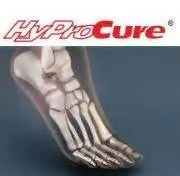One common foot issue that often prompts patients to visit the podiatrist is hammertoe. Hammertoe is a foot condition that is not only painful, but also embarrassing for patients who want to wear certain types of shoes and show off their feet. Learn more about what causes hammertoe and how it can be resolved at your podiatrist’s office.
patients who want to wear certain types of shoes and show off their feet. Learn more about what causes hammertoe and how it can be resolved at your podiatrist’s office.
What Is a Hammertoe?
The muscles of your toe help keep it in proper alignment so that it lies straight, the same way that your fingers look when you lay them out on a table. But in some cases, the joints in the toe become weakened, causing the top end of the toe to bend forward. This is called hammertoe—it usually happens to one or all of the middle three toes of the foot. In some cases the hammertoe is flexible, meaning that the toe can be manually bent back up into position, but in other cases it is rigid and can’t be adjusted. Hammertoe makes it difficult or even impossible to comfortably wear and walk in everyday shoes.
What Causes Hammertoe?
Hammertoe is most commonly caused by wearing bad shoes for extended periods of time. It is a problem often found in women because they like to wear attractive high heels that do unfortunate things to their feet. The design of many high heeled shoes causes the feet and toes to push up against the rigid front and bend them into the shape of a hammertoe. In some cases, people are more prone to hammertoe due to genetics or because of medical condition, like diabetes.
Treatments for Hammertoe
The treatment plan of choice for hammertoe is a combination of foot exercises, physical therapy and custommade orthotic shoes or inserts. Placing a splint on the affected toe can also help it heal back into its correct position. If the area is painful, your podiatrist may also administer cortisone injections. In the case of rigid hammertoe, where you lose the ability to move the toe up or down, surgery may be necessary to fix the joint.
Hammertoe is an embarrassing foot problem, but the good news is that it can be corrected or relieved in most cases. It is best treated when you catch it in its early stages, so make an appointment with your podiatrist at the first signs of a bending toe.













